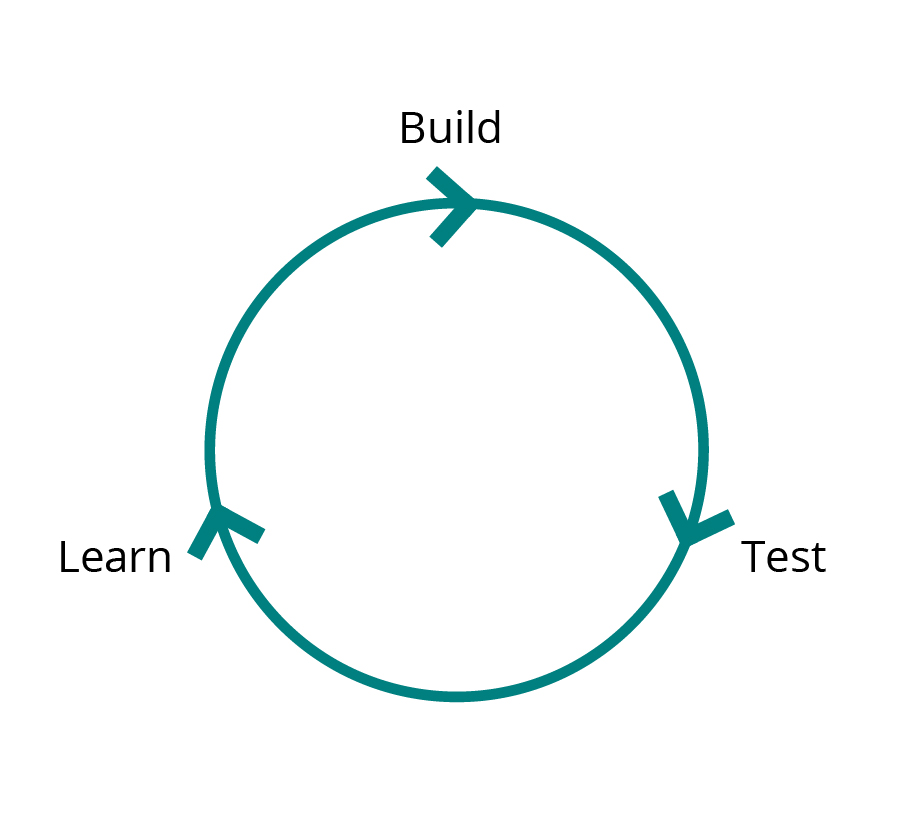5.1 Delivering the Final Design
5.1.3 The Cycle of Build, Test, Learn
In the Delivery stage you are delivering the final design, which implies that everything you design should really work as planned when being implemented. You can never know for sure until you test it. A design is never right the first time, which is why experienced designers and developers introduce a rigorous build/test/learn cycle. They build prototypes for various reasons (as will be discussed later in this course), perform tests, and learn what more is needed, what must be adapted, and what works out well. This serves as input for the next design activities, or even to ignite additional design activities, which in turn are built and tested to learn.
This feedback cycle is one of the core aspects of design, but also of product development, lean startup methodology, and also the way many musicians write music. It recalls the abductive reasoning as discussed before

As the exhibition concerned future food, tasting and smelling these future foods seemed essential for success. The problem was: what to offer and how to produce them? Because some of these foods had to be prepared on-site, which proved to be challenging. In order to get it right, the responsible developers introduced a regime of weekly testing, with a panel of people that lived nearby and wanted to participate. First, they developed what could be tasted, and tested their recipes by cooking samples (build) that were presented to the group who tasted and evaluated these (test). They learned what things people like and dislike, and, what they considered to be more important, what surprised them. They learned that foods that offered unexpected tastes or textures when eating invited the most 'oohs' and 'aahs'.
Once the recipes were 'stable', they built parts of the exhibits to test preparing and presenting the foods. The focus was less on the experience of food and more on how to make it doable for the museum employees - who are not chefs! So two employees were invited to these weekly tests.

